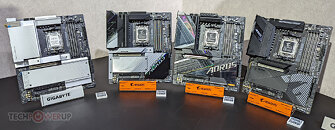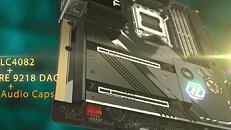
ASRock AMD X670E Motherboard Lineup Covers Five Price-points
ASRock is bringing as many as five motherboard models based on the AMD X670E chipset, for upcoming Ryzen 7000-series Socket AM5 processors. The lineup includes the twins X670E Taichi and X670E Taichi Carrara at the top; followed by the X670E Steel Legend, X670E Pro RS, and the X670E Phantom Gaming Lightning. The X670E Taichi/Carrara feature a mammoth 26-phase VRM, which going by the trends, could use 90 to 105 A power-stages. You get two PCi-Express 5.0 x16 slots (x8/x8 with both populated), at least two Gen 5 M.2 slots wired to the SoC, additional Gen 5 M.2 slots from the chipset, and a plethora of connectivity options.
What sets the two Taichi boards apart is the Carrara does away with the matte-black "gearwheel" design theme, and instead features a white marble appearance. It's not known if the marble pattern is a print, or if ASRock used actual stone. ASRock has been trying to upmarket its Steel Legend SKUs for the past couple of generations, and it appears like the X670E Steel Legend will be the third-based board from the series, with no PG Velocita SKU in sight. You get just the one PCI-Express 5.0 x16, at least two Gen 5 M.2 slots, a couple of Gen 4 M.2 slots, and fairly premium connectivity, including WLAN.
What sets the two Taichi boards apart is the Carrara does away with the matte-black "gearwheel" design theme, and instead features a white marble appearance. It's not known if the marble pattern is a print, or if ASRock used actual stone. ASRock has been trying to upmarket its Steel Legend SKUs for the past couple of generations, and it appears like the X670E Steel Legend will be the third-based board from the series, with no PG Velocita SKU in sight. You get just the one PCI-Express 5.0 x16, at least two Gen 5 M.2 slots, a couple of Gen 4 M.2 slots, and fairly premium connectivity, including WLAN.






















































